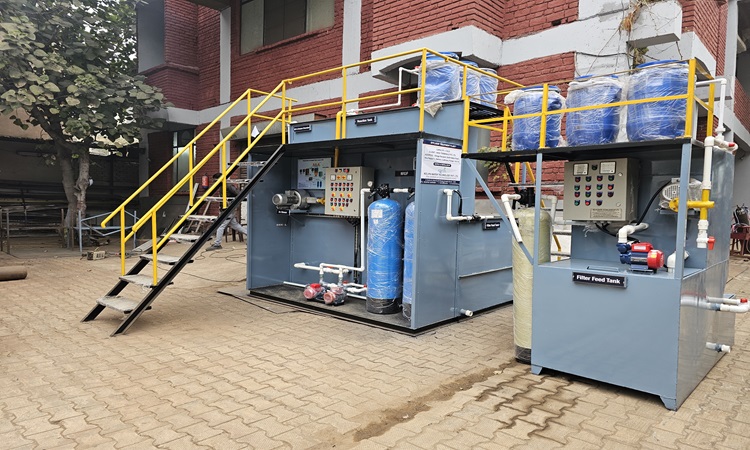
Rapid urbanization and industrialization have significantly increased wastewater generation worldwide. Managing this wastewater responsibly is essential to prevent environmental pollution, safeguard public health, and ensure sustainable water use. A Sewage Treatment Plant (STP) plays a crucial role in this process by treating sewage and wastewater to meet environmental standards before it is discharged or reused. STPs are not only vital for cities and industries but also for residential complexes, commercial buildings, and institutions that generate large volumes of wastewater.
What is a Sewage Treatment Plant?
A Sewage Treatment Plant (STP) is a facility designed to treat wastewater, primarily from households, institutions, and industries, to remove contaminants, harmful microorganisms, and organic matter. The treated water is then either discharged into natural water bodies or reused for non-potable purposes such as gardening, flushing, cooling towers, or construction activities.
The main objective of an STP is to ensure that wastewater is treated in compliance with pollution control norms set by regulatory authorities like the Central Pollution Control Board (CPCB) and State Pollution Control Boards (SPCBs) in India.
Why is Sewage Treatment Important?
- Environmental Protection
Untreated sewage contains harmful chemicals, organic matter, and pathogens. If released into rivers or lakes, it causes water pollution, kills aquatic life, and disrupts ecosystems. - Public Health
Proper sewage treatment prevents the spread of waterborne diseases such as cholera, dysentery, and typhoid. - Water Reuse
With increasing water scarcity, treated sewage water can be safely reused for irrigation, landscaping, and industrial applications. - Legal Compliance
Organizations and housing societies must adhere to CPCB/SPCB guidelines. Non-compliance leads to heavy penalties and legal action. - Resource Recovery
Advanced STPs allow recovery of biogas, energy, and sludge, which can be used as fertilizer.
Stages of Sewage Treatment
Sewage treatment is carried out in multiple stages to ensure maximum purification.
- Preliminary Treatment
- Screening: Large solids like plastics, rags, and debris are removed using bar screens.
- Grit Removal: Sand, stones, and grit are removed in grit chambers.
- Oil & Grease Removal: Oil and grease are separated using skimming tanks.
- Primary Treatment
- Involves sedimentation of suspended solids.
- Effluent is allowed to settle in primary clarifiers, where heavier solids sink as sludge.
- Secondary Treatment (Biological Treatment)
This stage uses microorganisms to break down organic pollutants.
- Activated Sludge Process (ASP): Air is supplied to aeration tanks where bacteria decompose organic matter.
- Moving Bed Biofilm Reactor (MBBR): Uses biofilm carriers for efficient biological treatment.
- Sequential Batch Reactor (SBR): A time-sequenced process where aeration, settling, and discharge occur in cycles.
- Membrane Bioreactor (MBR): Combines biological treatment with membrane filtration for high-quality effluent.
- Tertiary Treatment
- Involves advanced treatment methods like filtration, chlorination, UV disinfection, or ozonation.
- Ensures removal of pathogens and final polishing of effluent.
- Sludge Treatment
- Sludge generated during treatment is processed separately.
- Techniques include anaerobic digestion, dewatering, and drying.
- Final sludge can be used as fertilizer or sent for safe disposal.
Types of Sewage Treatment Plants
- Conventional Activated Sludge Plant (ASP)
- Widely used in urban and industrial areas.
- Requires more land and energy.
- MBBR (Moving Bed Biofilm Reactor)
- Compact and efficient.
- Suitable for limited space.
- SBR (Sequential Batch Reactor)
- Highly automated.
- Produces excellent quality effluent.
- MBR (Membrane Bioreactor)
- Advanced technology.
- Produces crystal-clear treated water.
- Packaged STPs
- Pre-fabricated and ready-to-use units.
- Ideal for small residential complexes, hotels, or institutions.
Applications of Sewage Treatment Plants
- Residential complexes & housing societies
- Hospitals & educational institutions
- Hotels, malls, and commercial buildings
- Industrial estates
- Municipal corporations & smart cities
- Railway stations & airports
Benefits of Sewage Treatment Plants
- Environmental Sustainability
Reduces pollution load on natural water bodies. - Water Recycling
Treated water is reused, reducing dependency on freshwater sources. - Cost Savings
Reduces water bills and operational costs in the long term. - Energy Generation
Biogas produced during sludge digestion can be used for energy needs. - Compliance & Corporate Responsibility
Enhances reputation of businesses and housing societies by ensuring eco-friendly operations.
Future of Sewage Treatment Plants
With advancements in technology, STPs are becoming smarter and more efficient. Future trends include:
- Automation & IoT Integration for remote monitoring.
- Decentralized STPs for small-scale applications.
- Zero Liquid Discharge (ZLD) systems for industries.
- Energy-Neutral Plants powered by renewable energy and biogas.
Conclusion
A Sewage Treatment Plant (STP) is no longer an optional facility but a mandatory requirement for sustainable development. From residential complexes to large industries, STPs ensure that wastewater is treated, reused, and disposed of responsibly. With water scarcity on the rise, treated sewage water can significantly reduce the demand for fresh water while protecting the environment.
By investing in advanced sewage treatment technologies, societies and organizations not only comply with legal requirements but also contribute to a cleaner, greener, and healthier future.



